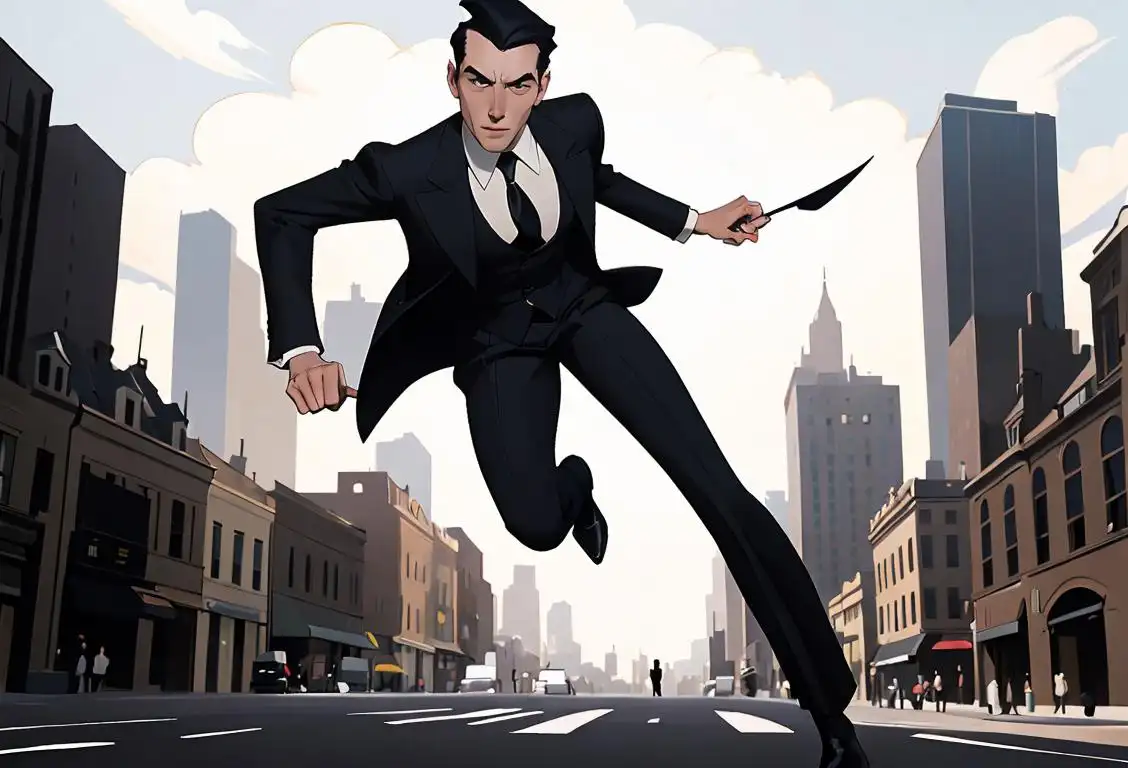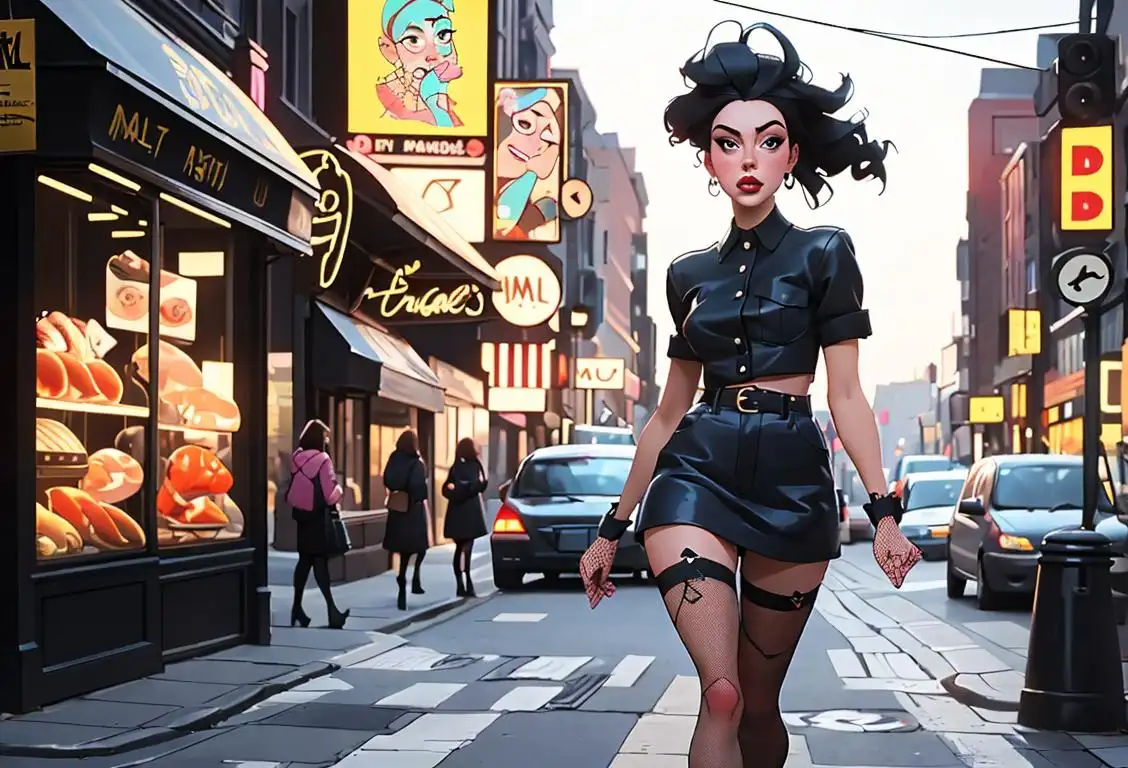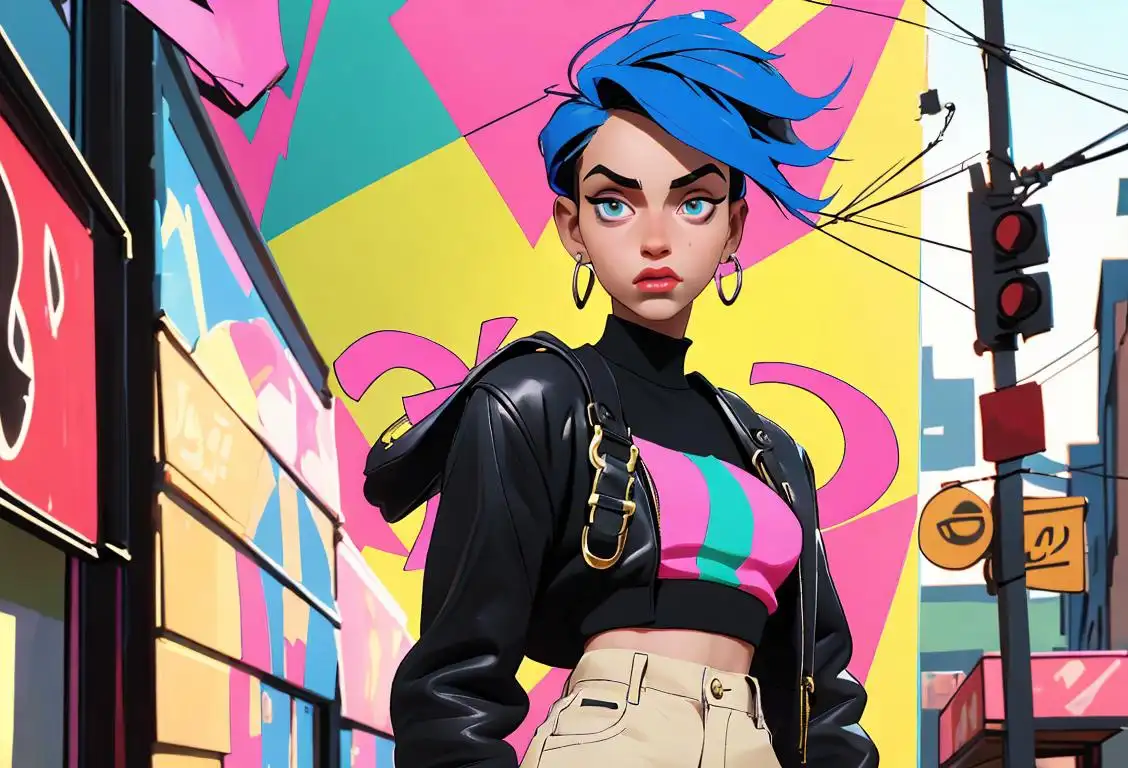National Wear All Black Day

Welcome to the mysterious and stylish world of National Wear All Black Day! This is a day when we celebrate the timeless elegance and edgy allure of the color black. So grab your favorite noir ensemble and let's dive into the shadowy depths of this fashionable holiday.
When is Wear All Black Day?
It's national wear all black day on the 17th April.
The Internet History of National Wear All Black Day
While the origins of National Wear All Black Day are somewhat elusive, one thing is for certain: black is the new black. This day has gained popularity on social media platforms, with people from all walks of life embracing the sartorial power of the darkest hue.
It's no surprise that National Wear All Black Day became a trend online. After all, black is not only slimming but also effortlessly chic. From little black dresses to black tuxedos, this versatile color brings an air of sophistication to any outfit.
The Actual National History of Wearing All Black
While National Wear All Black Day may not have an official national history, the act of wearing all black has been significant in various cultures and contexts throughout time. In some societies, wearing black is a symbol of mourning and remembrance, while in others, it represents rebellion or a statement of personal style.
Black has also made a mark in the world of fashion and pop culture. From Coco Chanel's iconic little black dress to Johnny Cash's famous all-black attire, this color has become synonymous with elegance, mystery, and rock 'n' roll.
Did You Know?
Did you know that black is not technically a color, but the absence of color? It absorbs all light and reflects none back to our eyes, which is why it appears so dark and powerful. So when you wear black, you're actually embracing the absence and encapsulating the essence of coolness. How cool is that?
History behind the term 'Wear All Black'
1920
The rise of the flapper style
In the 1920s, a new era of fashion emerged, known as the flapper style. This style was characterized by its focus on liberation and modernity, with women wearing shorter hemlines, looser silhouettes, and bolder accessories. One popular fashion choice was to wear all black, as it symbolized rebellion and independence for women who were breaking free from traditional societal norms.
1950
The influence of the Beat Generation
In the 1950s, the Beat Generation emerged as a countercultural movement that rebelled against mainstream society. One of the defining features of the Beat Generation was their distinctive fashion style, which often involved wearing all black clothing. This choice of attire served as a rejection of consumerism and conformity, reflecting the movement's desire for individuality and artistic expression.
1970
Punk fashion takes center stage
The 1970s witnessed the rise of punk rock music and the associated punk fashion movement. Punk fashion was characterized by its rebellious and anti-establishment nature, and one common element of this style was wearing all black. Black clothing became a symbol of punk culture, representing a rejection of mainstream norms and a means of expressing anarchy and nonconformity.
1990
The gothic subculture adopts all black attire
The gothic subculture, which emerged in the 1980s but gained widespread popularity in the 1990s, embraced all black attire as an essential component of its fashion aesthetic. Goths were known for their dark and melancholic style, often incorporating Victorian influences. Wearing all black became a way for goths to express their fascination with the macabre, supernatural, and introspective aspects of life.
Present
Expression of personal style and elegance
Today, wearing all black remains a popular fashion choice for many people, irrespective of subcultures. It has become a versatile and timeless look that represents sophistication, elegance, and simplicity. Additionally, wearing all black allows individuals to create a sleek and cohesive outfit effortlessly. Whether it's in formal or casual settings, an all-black ensemble has become a go-to choice for those who want to make a statement through understated and refined fashion.
Did you know?
Did you know that black is not technically a color, but the absence of color? It absorbs all light and reflects none back to our eyes, which is why it appears so dark and powerful. So when you wear black, you're actually embracing the absence and encapsulating the essence of coolness. How cool is that?Tagged
celebration style fashionFirst identified
17th April 2020Most mentioned on
17th April 2020Total mentions
6Other days
Levi Day
Suit Day
Fishnet Day
Swag Day
Wear All Black Day
Khaki Day
Light Jacket Day
Scarf Day
Eyewear Day
Denim Day








